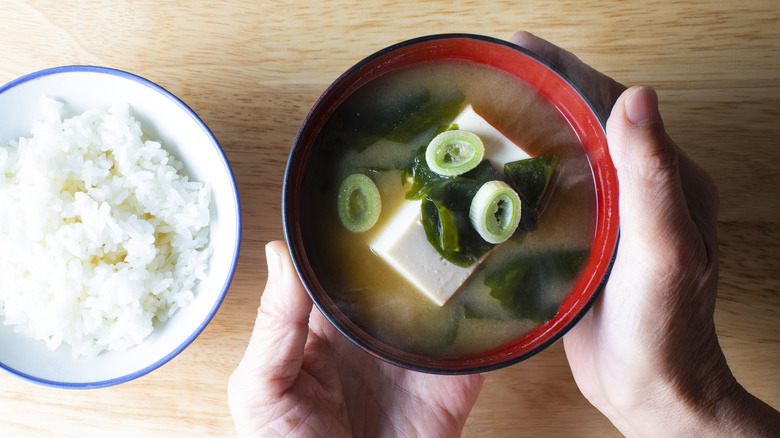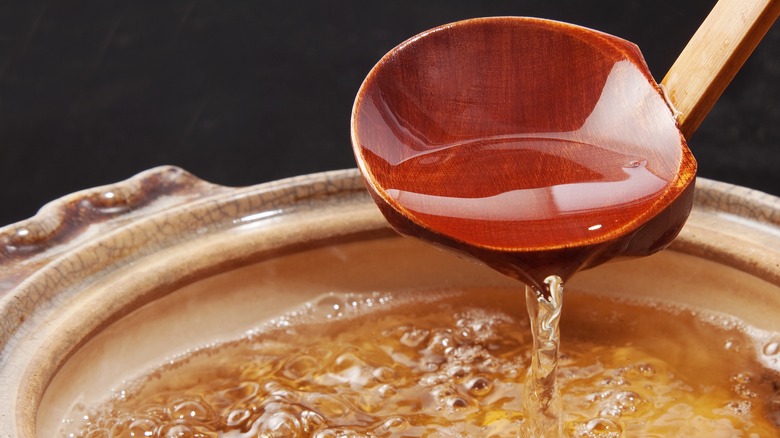How Homemade Dashi Makes All The Difference For Miso Soup
Japanese cuisine emphasizes balance and harmony — principles embodied in a seemingly simple bowl of miso soup. This comforting Japanese staple draws most of its flavor from a duet of ingredients: miso and dashi. Miso, the country's staple fermented soybean paste, lends the soup its salty, robust character, while dashi provides the vegetal tea-colored broth made with kombu, a dried kelp loaded with glutamate. A common addition to miso soup is tofu, a high-protein flavor-sponge of soy milk curds that complements the soup's overall taste. Each bite of tofu in miso soup made with dashi is a flavor explosion.
Crafting homemade dashi from scratch produces an umami-laden broth that deeply enhances miso soup's flavor with a depth that can't be matched by commercially available chicken or vegetable stocks and broths. While store-bought stocks are convenient, they lack homemade dashi's aroma and nuanced flavors. Here are two simple ways you can build this broth.
The key to delicious miso soup lies in homemade dashi
One way to make dashi is by cold brewing: steep the kombu in water for a few hours at room temperature or overnight in the refrigerator, then remove the kombu and strain the clear broth. This slow extraction produces a delicate, subtly flavored broth with a briny, umami essence.
The second way involves simmering the kombu in water over medium-low heat at a near-boil for 10 minutes. Be sure to check the consistency as you cook, as overcooking the kombu can result in a bitter and slimy broth — a result of the gelling alginates inherent to the seaweed. For the same reason, don't forget to remove the kombu before you heat the broth again for any additional ingredients.
Then, other flavorful ingredients may be added, like bonito flakes, dried shiitake mushrooms, or dried anchovies. Let these ingredients steep for a few minutes, then strain and use the dashi to make delicious homemade miso soup. It'll burst with beautiful flavors from the sea and offer a flavor complexity that canned or boxed stocks simply can't match.
So the next time you're craving miso soup at home, consider crafting homemade dashi first; it'll make a difference worth savoring, echoing Japan's time-honored culinary practices and pursuit of culinary excellence.

